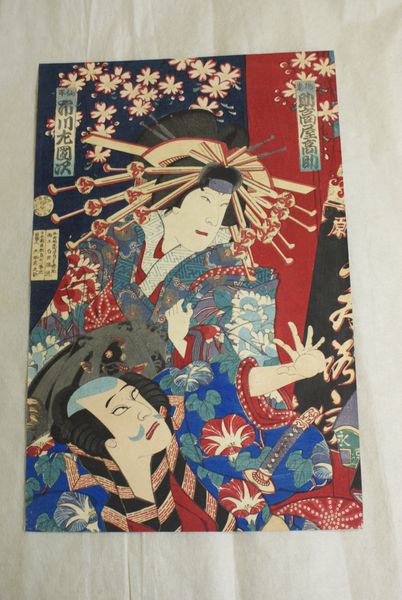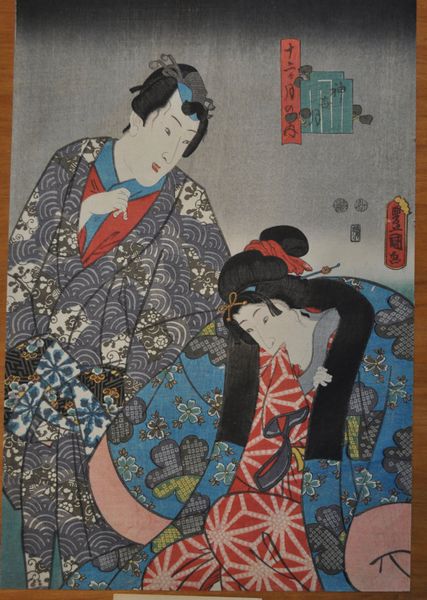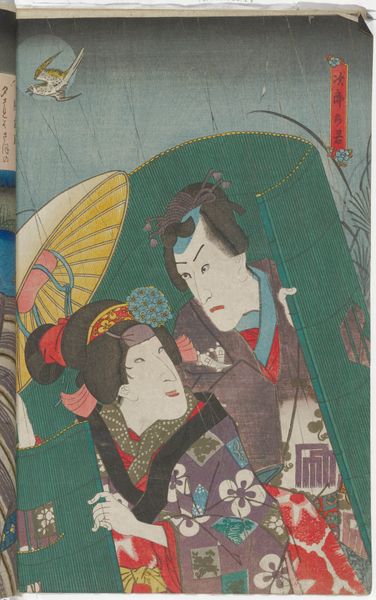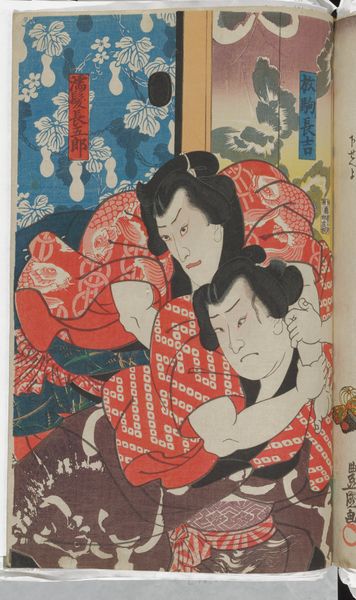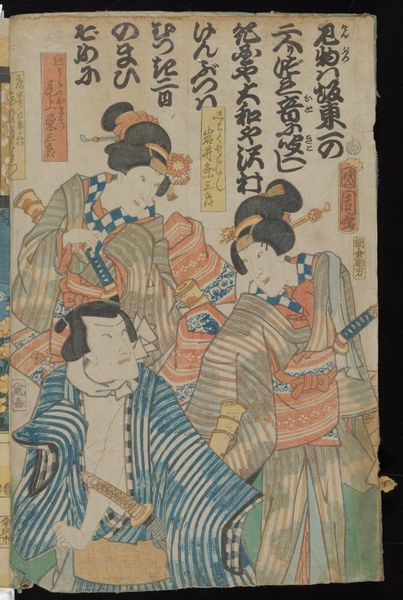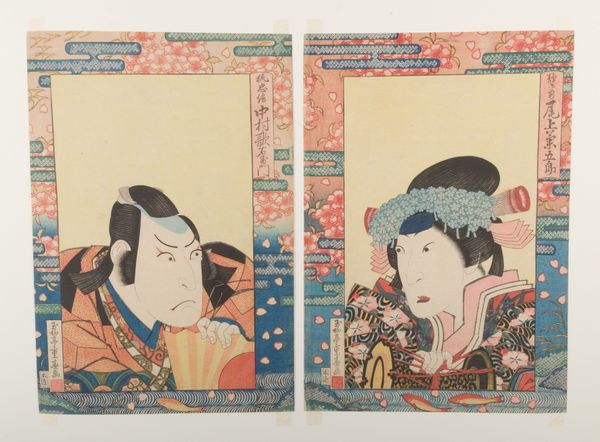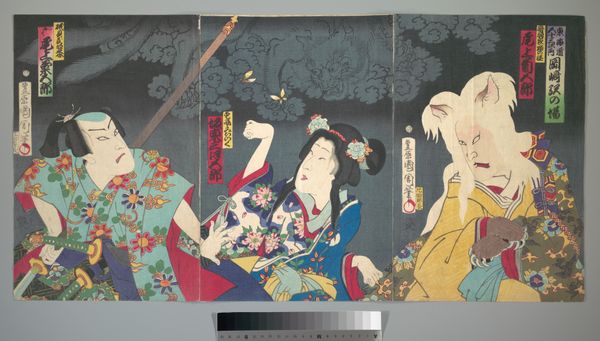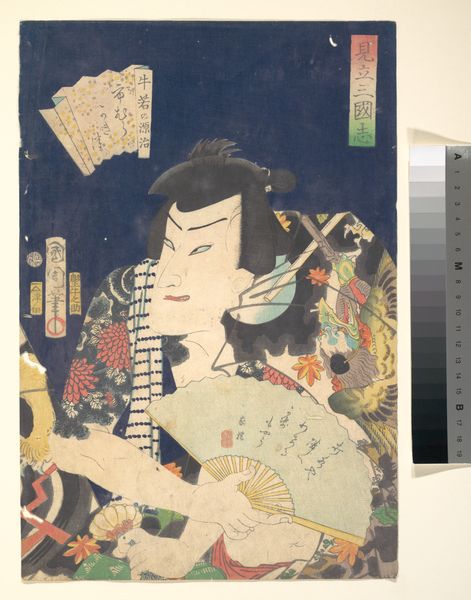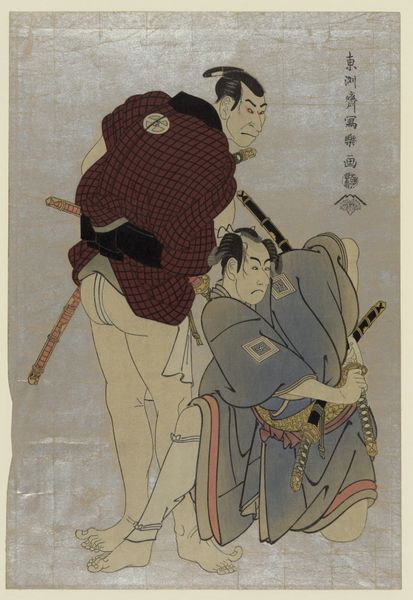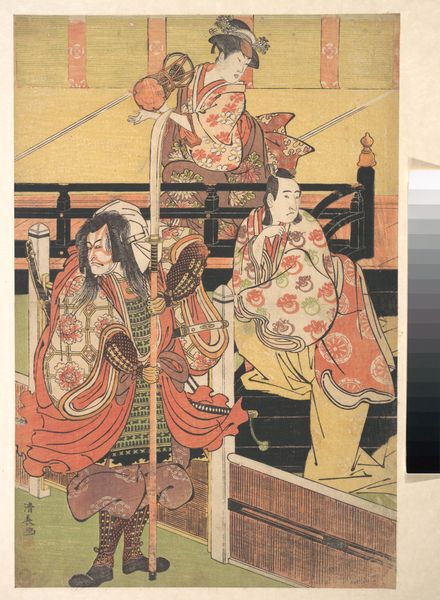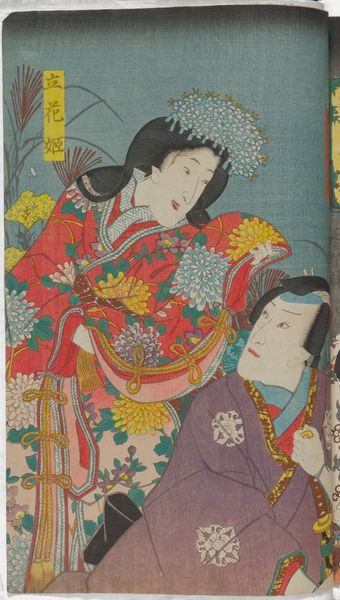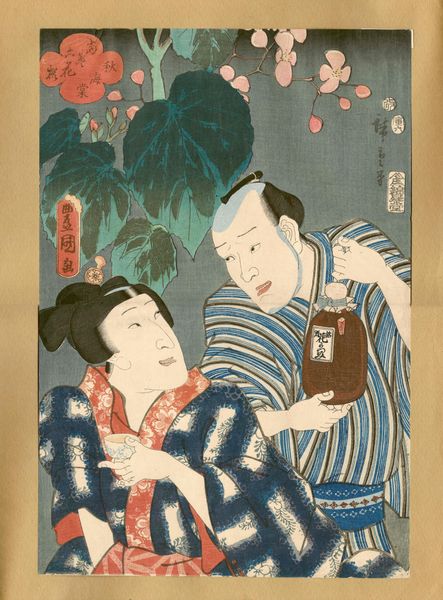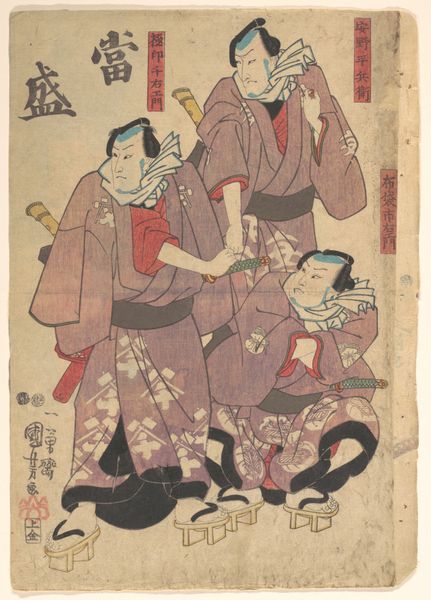
Dimensions: 13 9/16 × 8 7/8 in. (34.45 × 22.54 cm) (ōban)
Copyright: Public Domain
This is the center sheet of a kabuki triptych by Utagawa Kuniume, made with woodblock print in Japan at the end of the 19th Century. Kabuki was a popular form of theater with codified role-types and elaborate makeup styles. Prints of kabuki scenes served as advertising, celebrity portraits, and records of important performances. The visual codes in the image are quite specific. The colors, the patterns, and the hairstyles of the actors, all point to an intricate web of cultural references. Kabuki grew in popularity during the Edo period, a time of relative peace and economic growth in Japan, but also rigid social stratification. Kabuki theaters were often located in entertainment districts, but the art form was closely monitored by the government. It would be interesting to know where this print was sold and who its intended audience was. Analyzing this print requires research into the history of Kabuki, popular culture, and the institutions of art and censorship in Meiji-era Japan. Ultimately, this artwork’s meaning is contingent on the social and institutional context of its creation and reception.
Comments
No comments
Be the first to comment and join the conversation on the ultimate creative platform.
